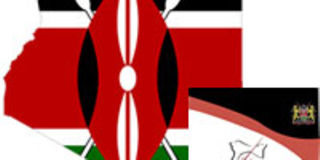FACTS & FIGURES: Kenya Referendum 2010

KENYA REFERENDUM 2010
- There are 27,689 polling stations.
- Voting will start August 4, 2010, from 6am and end at 5pm.
- All voting and counting is done manually; a new electronic tallying system will be tested.
More than 27,000 GPRS-enabled mobile phones will be used to send results from polling stations to the constituency tallying centres.
VOTER STATISTICS
- 12,656,451 Kenyans (12.6 million) have registered to vote in the referendum, this lagged behind the 14.2 million registered voters in 2007.
- Electoral Region (not province) with highest number of registered voter is Nairobi with 1.3 million, and the region with lowest number of voters is Garissa/Ijara with 76,563 voters.
- 49% of the newly registered voters are women (North Rift recorded the highest number of women voters whilst Wajir had the lowest number of women registered).
59% of newly registered voters are under the age of 40.
ABOUT THE INTERIM INDEPENDENT ELECTORAL COMMISSION(IIEC)
- On December 28th 2008 Parliament disbanded Electoral Commission of Kenya (ECK).
- IIEC was established with 8 Commissioners and a chairperson, who were appointed on 8th May 2009.
The referendum is the first nationwide election that the IIEC is managing, though it has so far successfully mounted 4 parliamentary by-elections.
KENYA'S PREVIOUS REFERENDUM - 2005
- In 2002, President Mwai Kibaki, in his inaugural address, pledged that a new constitution would be completed within 100 days.
- Kibaki led the "Yes" campaign under the symbol of a banana whilst the the "No" camp brought together seven cabinet ministers and the official opposition party, Kanu, under the symbol of an orange. The current Prime Minister Raila Odinga, Vice President Kalonzo Musyoka, and Deputy PMs Uhuru Kenyatta and Musalia Mudavadi were all part of the then No camp.
The referendum was organised by the ECK, led by Samuel Kivuitu. After the publishing of the Wako Bill on August 22, the ECK registered referendum committees (September 5–15) and set the campaign period to one month - from October 21 to November 19.
Key bits of the 2005 draft constitution:
- Strong Presidency (this was viewed as the primary reason it was rejected – Kenyans had just gotten over the Daniel arap Moi era!)
- Retained Islamic courts but allowed for other types of civil courts (Christian, Hindu and traditional)
Proposed radical land reform
Voter Statistics 2005:
- Total number of voters: 11,594,877
- The highest voter turnout rate (71.86%) occurred in the Rift Valley Province.
Referendum 2005 outcome: 3.5 million ‘NO’ votes and 2.5 million ‘YES’ votes (so 58.12% versus 41.8%)
Referendum Quirks
- Referendum colours and themes have always played an important part. In 2005, the theme was Oranges (No) vs. Bananas (Yes).
- Raila and Kibaki – who are championing the “Yes” drive this year - were actually opposed to each other in 2005!
- In the 2005, one FM radio station, Kass FM 89.0, was closed down briefly on orders of the Communications Commission of Kenya after allegedly having used harsh “hate speech” language.


